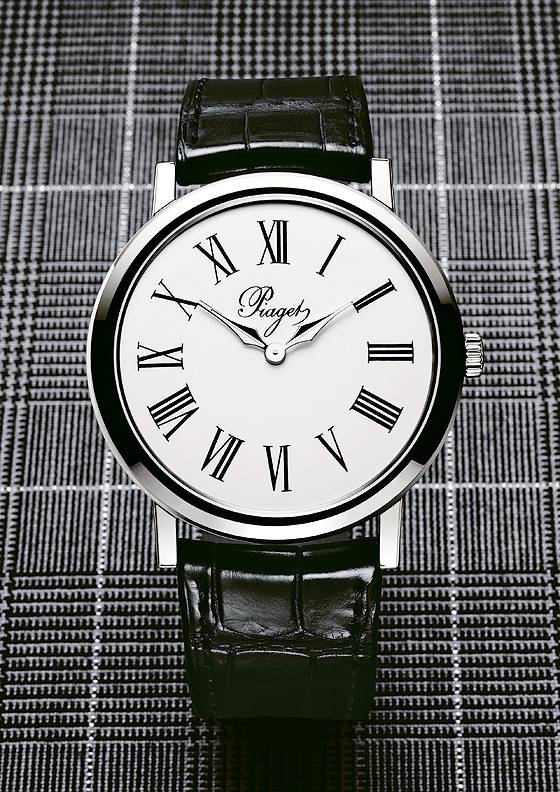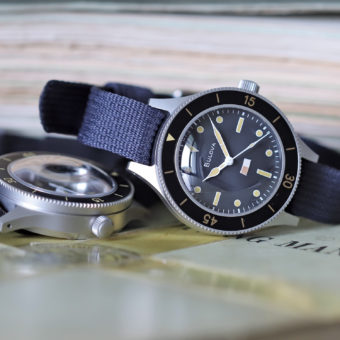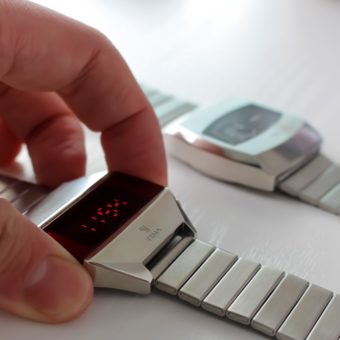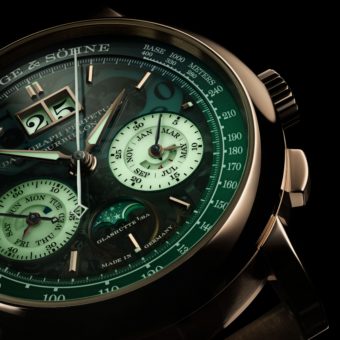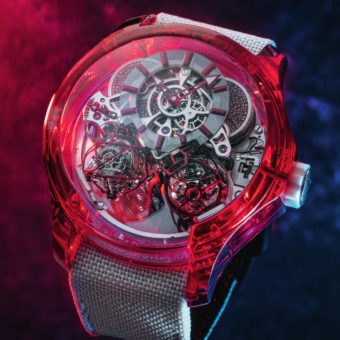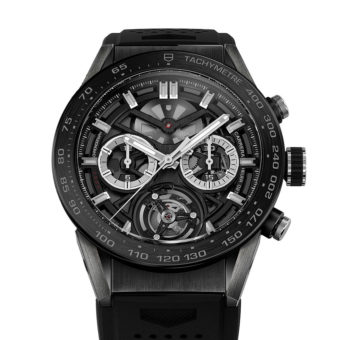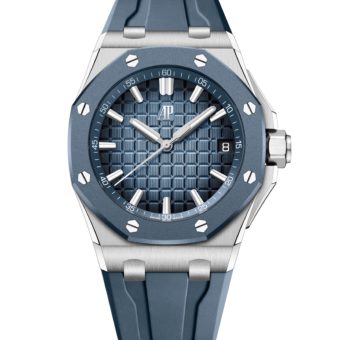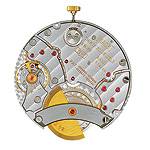 In 2007, Piaget marked the 50th anniversary of its ultra-thin Caliber 9P by reissuing the movement that made it famous and by launching its first in-house mechanical chronograph movement. In this feature from our November-December 2007 issue, contributor and Watch Insider blogger Alexander Linz covers this milestone for WatchTime.
In 2007, Piaget marked the 50th anniversary of its ultra-thin Caliber 9P by reissuing the movement that made it famous and by launching its first in-house mechanical chronograph movement. In this feature from our November-December 2007 issue, contributor and Watch Insider blogger Alexander Linz covers this milestone for WatchTime.
In 2007, Piaget marks a milestone. It was 50 years before that the firm introduced Caliber 9P, a manual-wind movement that was a mere 2.0 mm thick. Three years later Piaget followed with an automatic version, Caliber 12P, which measured just 2.3 mm thick. Caliber 12P earned Piaget a listing in Guinness World Records as the maker of “the world’s thinnest self-winding movement.” Today Piaget enjoys a well-earned reputation as a maker of elegant and uncommonly slim watches. More recently the firm has introduced the modern 430P, 450P, and 438P movements measuring a mere 2.1 mm thick, as well as the new line of 600P tourbillon regulator movements.
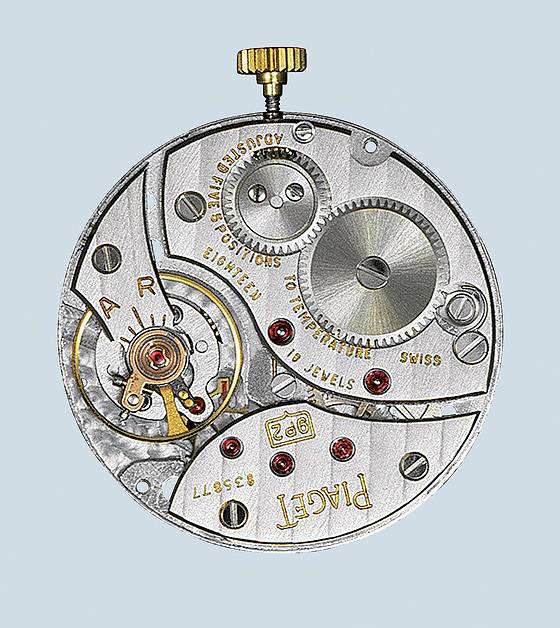
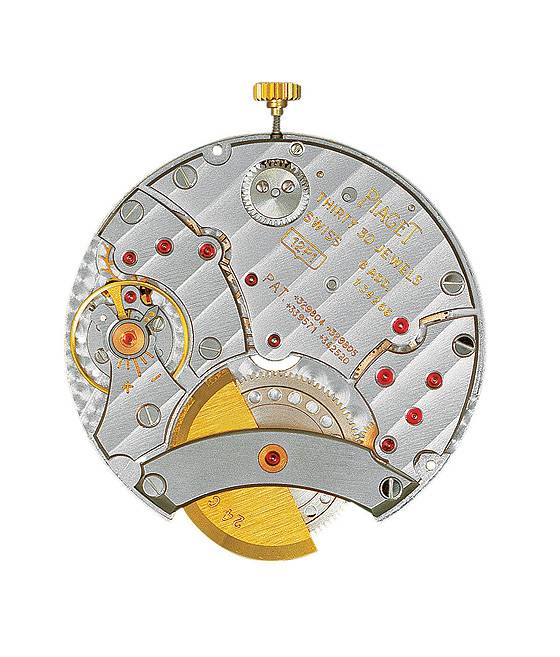
Piaget is marking the 9P milestone with the introduction of several new ultra-thin timepieces. “Piaget has decided to approach 2007 with a special focus on ultra-thin mechanical movements,” says CEO Philippe Leopold-Metzger. “In a period when watch manufacturers are tending to offer almost exclusively large-size models, Piaget has opted to pursue the path of elegance.”
Caliber 9P returns in limited-edition Altiplano watches in both wrist and pocket versions. The wristwatch features a new round case in white gold with a 38-mm diameter. The white enamel dial has Roman numerals and the Piaget signature in Old English lettering. Piaget will produce 50 pieces priced at $14,500*. The limited-edition pocket watches (25 in white gold and 25 in pink gold, both at $21,000) have a square 38-mm case, slender hour markers on a silvered dial and matching understated hour and minute hands. Like all historical Piaget models, the caseback is engraved with the brand’s coat-of-arms. The watches come with a gold chain, leather cordlet, protective pouch and leather base, which turns it into a desk watch. The 9P movement in these anniversary pieces oscillates at 19,800 vibrations per hour. Despite its petite dimensions, it has a 38-hour power reserve.
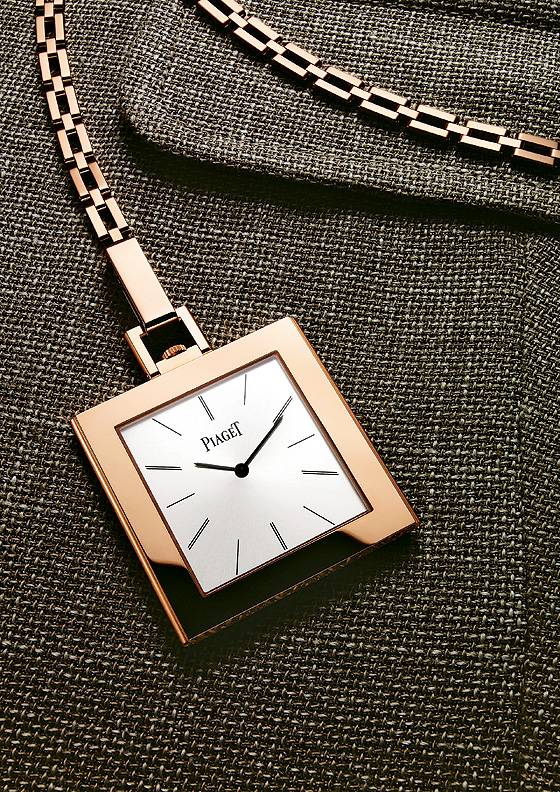
But Piaget is not just reviving an ultra-thin blast from the past. It is also marking the 9P anniversary with a new milestone for the manufacture: its first mechanical chronograph movement that is entirely designed, developed and produced in-house. The automatic Caliber 880P makes its debut in the Piaget Polo Chronograph with a pink gold case measuring 43 mm in diameter. It is the latest entry in Piaget’s dominant family of calibers identified by the number 8 at the beginning of their names. The 800 family includes the hand-wound Caliber 830P, the self-winding 800P, and Caliber 850P with an indicator for the time in a second time zone.
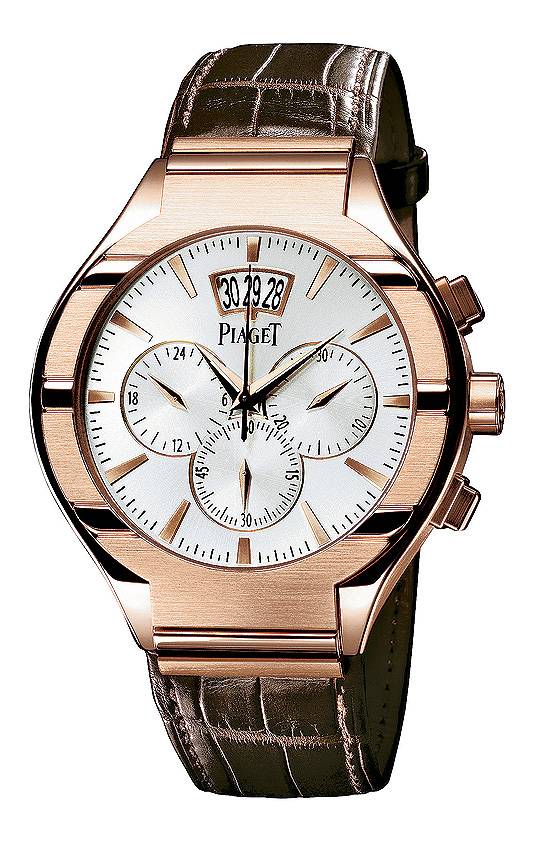
Unlike the balances in the other members of the 800 family, which complete 28,800 semi-oscillations per hour, the balance in the new Caliber 800P swings at a pace of 21,600 vibrations per hour. With a height of 5.6 mm, it continues Piaget’s tradition of low-rise movements. It maintains its thinness despite the inclusion of an integrated stopwatch function and a flyback mechanism. Its coupling is vertically oriented to save space. Unlike horizontal coupling, a vertically oriented coupling mechanism enables Piaget to obviate fine tuning on the column wheel and the chronograph control during production. Caliber 880P is 12 lignes (26.8 mm) in diameter, contains 35 jewels and has a 52-hour power reserve. The screws on the rim of the large and visually appealing balance are only decorative, because fine adjustments can be performed via a Triovis regulating system. The movement is very attractively decorated with a variety of engraved patterns, including Geneva waves. The ball-borne rotor winds the mainspring in both directions of rotation and bears the coat-of-arms of the Piaget family. The stopwatch function of Caliber 880P was deliberately designed to be a short-interval chronograph and is limited to 30 elapsed minutes. Rather than giving the movement a 12-hour counter, Piaget opted for a 24-hour hand at 9 o’clock to indicate the hour in a second time zone. The suggested retail price is $20,900.

* All prices listed are circa December 2007 and are subject to change.

